#app designer
Text
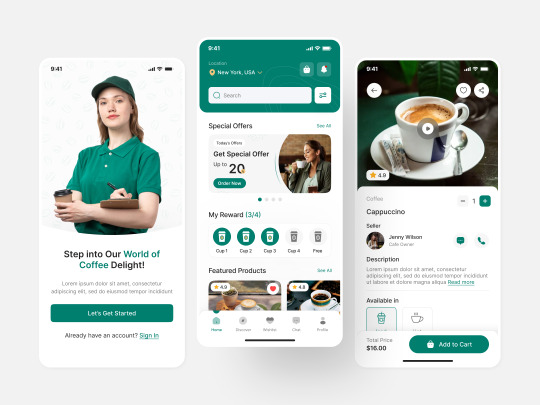
Coffee Shop App UI Design | App Design | UIUX Design
https://www.insightlancer.com/
#design#ui#development#ux#app#figmadesign#hireus#coffee shop app#app ui designer#hire figma designer#app designer
0 notes
Text
MATLAB App Designer is a drag and drops feature of MATLAB that lets you create professional apps without being an experienced software developer. Drag and drop visual components to layout your graphical user interface (GUI) design and use the integrated editor to program its behaviour quickly. In this blog, you will get to know the essential elements of the app designer.
0 notes
Text
How lock-in hurts design

Berliners: Otherland has added a second date (Jan 28) for my book-talk after the first one sold out - book now!

If you've ever read about design, you've probably encountered the idea of "paving the desire path." A "desire path" is an erosion path created by people departing from the official walkway and taking their own route. The story goes that smart campus planners don't fight the desire paths laid down by students; they pave them, formalizing the route that their constituents have voted for with their feet.
Desire paths aren't always great (Wikipedia notes that "desire paths sometimes cut through sensitive habitats and exclusion zones, threatening wildlife and park security"), but in the context of design, a desire path is a way that users communicate with designers, creating a feedback loop between those two groups. The designers make a product, the users use it in ways that surprise the designer, and the designer integrates all that into a new revision of the product.
This method is widely heralded as a means of "co-innovating" between users and companies. Designers who practice the method are lauded for their humility, their willingness to learn from their users. Tech history is strewn with examples of successful paved desire-paths.
Take John Deere. While today the company is notorious for its war on its customers (via its opposition to right to repair), Deere was once a leader in co-innovation, dispatching roving field engineers to visit farms and learn how farmers had modified their tractors. The best of these modifications would then be worked into the next round of tractor designs, in a virtuous cycle:
https://securityledger.com/2019/03/opinion-my-grandfathers-john-deere-would-support-our-right-to-repair/
But this pattern is even more pronounced in the digital world, because it's much easier to update a digital service than it is to update all the tractors in the field, especially if that service is cloud-based, meaning you can modify the back-end everyone is instantly updated. The most celebrated example of this co-creation is Twitter, whose users created a host of its core features.
Retweets, for example, were a user creation. Users who saw something they liked on the service would type "RT" and paste the text and the link into a new tweet composition window. Same for quote-tweets: users copied the URL for a tweet and pasted it in below their own commentary. Twitter designers observed this user innovation and formalized it, turning it into part of Twitter's core feature-set.
Companies are obsessed with discovering digital desire paths. They pay fortunes for analytics software to produce maps of how their users interact with their services, run focus groups, even embed sneaky screen-recording software into their web-pages:
https://www.wired.com/story/the-dark-side-of-replay-sessions-that-record-your-every-move-online/
This relentless surveillance of users is pursued in the name of making things better for them: let us spy on you and we'll figure out where your pain-points and friction are coming from, and remove those. We all win!
But this impulse is a world apart from the humility and respect implied by co-innovation. The constant, nonconsensual observation of users has more to do with controlling users than learning from them.
That is, after all, the ethos of modern technology: the more control a company can exert over its users ,the more value it can transfer from those users to its shareholders. That's the key to enshittification, the ubiquitous platform decay that has degraded virtually all the technology we use, making it worse every day:
https://pluralistic.net/2023/02/19/twiddler/
When you are seeking to control users, the desire paths they create are all too frequently a means to wrestling control back from you. Take advertising: every time a service makes its ads more obnoxious and invasive, it creates an incentive for its users to search for "how do I install an ad-blocker":
https://www.eff.org/deeplinks/2019/07/adblocking-how-about-nah
More than half of all web-users have installed ad-blockers. It's the largest consumer boycott in human history:
https://doc.searls.com/2023/11/11/how-is-the-worlds-biggest-boycott-doing/
But zero app users have installed ad-blockers, because reverse-engineering an app requires that you bypass its encryption, triggering liability under Section 1201 of the Digital Millennium Copyright Act. This law provides for a $500,000 fine and a 5-year prison sentence for "circumvention" of access controls:
https://pluralistic.net/2024/01/12/youre-holding-it-wrong/#if-dishwashers-were-iphones
Beyond that, modifying an app creates liability under copyright, trademark, patent, trade secrets, noncompete, nondisclosure and so on. It's what Jay Freeman calls "felony contempt of business model":
https://locusmag.com/2020/09/cory-doctorow-ip/
This is why services are so horny to drive you to install their app rather using their websites: they are trying to get you to do something that, given your druthers, you would prefer not to do. They want to force you to exit through the gift shop, you want to carve a desire path straight to the parking lot. Apps let them mobilize the law to literally criminalize those desire paths.
An app is just a web-page wrapped in enough IP to make it a felony to block ads in it (or do anything else that wrestles value back from a company). Apps are web-pages where everything not forbidden is mandatory.
Seen in this light, an app is a way to wage war on desire paths, to abandon the cooperative model for co-innovation in favor of the adversarial model of user control and extraction.
Corporate apologists like to claim that the proliferation of apps proves that users like them. Neoliberal economists love the idea that business as usual represents a "revealed preference." This is an intellectually unserious tautology: "you do this, so you must like it":
https://boingboing.net/2024/01/22/hp-ceo-says-customers-are-a-bad-investment-unless-they-can-be-made-to-buy-companys-drm-ink-cartridges.html
Calling an action where no alternatives are permissible a "preference" or a "choice" is a cheap trick – especially when considered against the "preferences" that reveal themselves when a real choice is possible. Take commercial surveillance: when Apple gave Ios users a choice about being spied on – a one-click opt of of app-based surveillance – 96% of users choice no spying:
https://arstechnica.com/gadgets/2021/05/96-of-us-users-opt-out-of-app-tracking-in-ios-14-5-analytics-find/
But then Apple started spying on those very same users that had opted out of spying by Facebook and other Apple competitors:
https://pluralistic.net/2022/11/14/luxury-surveillance/#liar-liar
Neoclassical economists aren't just obsessed with revealed preferences – they also love to bandy about the idea of "moral hazard": economic arrangements that tempt people to be dishonest. This is typically applied to the public ("consumers" in the contemptuous parlance of econospeak). But apps are pure moral hazard – for corporations. The ability to prohibit desire paths – and literally imprison rivals who help your users thwart those prohibitions – is too tempting for companies to resist.
The fact that the majority of web users block ads reveals a strong preference for not being spied on ("users just want relevant ads" is such an obvious lie that doesn't merit any serious discussion):
https://www.iccl.ie/news/82-of-the-irish-public-wants-big-techs-toxic-algorithms-switched-off/
Giant companies attained their scale by learning from their users, not by thwarting them. The person using technology always knows something about what they need to do and how they want to do it that the designers can never anticipate. This is especially true of people who are unlike those designers – people who live on the other side of the world, or the other side of the economic divide, or whose bodies don't work the way that the designers' bodies do:
https://pluralistic.net/2022/10/20/benevolent-dictators/#felony-contempt-of-business-model
Apps – and other technologies that are locked down so their users can be locked in – are the height of technological arrogance. They embody a belief that users are to be told, not heard. If a user wants to do something that the designer didn't anticipate, that's the user's fault:
https://www.wired.com/2010/06/iphone-4-holding-it-wrong/
Corporate enthusiasm for prohibiting you from reconfiguring the tools you use to suit your needs is a declaration of the end of history. "Sure," John Deere execs say, "we once learned from farmers by observing how they modified their tractors. But today's farmers are so much stupider and we are so much smarter that we have nothing to learn from them anymore."
Spying on your users to control them is a poor substitute asking your users their permission to learn from them. Without technological self-determination, preferences can't be revealed. Without the right to seize the means of computation, the desire paths never emerge, leaving designers in the dark about what users really want.
Our policymakers swear loyalty to "innovation" but when corporations ask for the right to decide who can innovate and how, they fall all over themselves to create laws that let companies punish users for the crime of contempt of business-model.
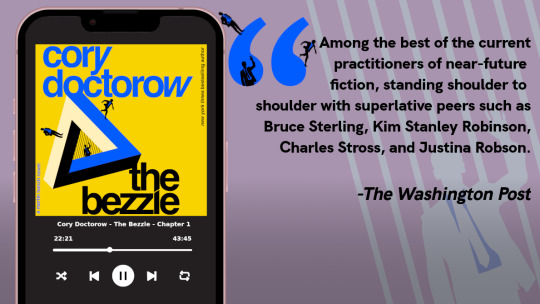
I'm Kickstarting the audiobook for The Bezzle, the sequel to Red Team Blues, narrated by @wilwheaton! You can pre-order the audiobook and ebook, DRM free, as well as the hardcover, signed or unsigned. There's also bundles with Red Team Blues in ebook, audio or paperback.

If you'd like an essay-formatted version of this post to read or share, here's a link to it on pluralistic.net, my surveillance-free, ad-free, tracker-free blog:
https://pluralistic.net/2024/01/24/everything-not-mandatory/#is-prohibited

Image:
Belem (modified)
https://commons.wikimedia.org/wiki/File:Desire_path_%2819811581366%29.jpg
CC BY 2.0
https://creativecommons.org/licenses/by/2.0/deed.en
#pluralistic#desire paths#design#drm#everything not mandatory is prohibited#apps#ip#innovation#user innovation#technological self-determination#john deere#twitter#felony contempt of business model
3K notes
·
View notes
Link
In today's digital era, adopting a mobile-first design approach in mobile application development is crucial for success. This approach prioritizes designing for mobile devices before desktop computers and offers numerous benefits.
0 notes
Text
Best Service of Mobile App Development Liverpool
Mobile apps are changing the Marketing metrics like never before

With people spending a lot of time stuck with those smart screens, mobile apps can act as the perfect way to communicate your brand message.
Mobile apps play a pivotal role in the success of any Business. A bespoke mobile app designed around your specific Business can easily help you outrank your peers with an excellent user experience.
On top of that, a mobile app can be a game-changer for regions like Liverpool, where the population’s average age is below 35. Businesses can reach out to these people using custom mobile apps.
An intuitive Mobile app with Fantastic design, immersive UI, Scalability & Smooth Operations can help boost your Business significantly. Mobile apps can reduce the cost of serving your customers by offering them some basic services.
A well-designed Mobile App keeps the user engaged with your Brands & gives you a competitive edge.
Let’s get started
Why choose Web99 for Mobile App Development Liverpool?
Liverpool is a blistering suburb with a multi-ethnic population. Moreover, the median age of Liverpool residents is 34, which is younger than the national median.
So you’ll need a mobile app development agency that understands the demography of Liverpool & connect with the younger population. Once you do that, you can attract many customers with your custom mobile apps.
At Web99, we excel at crafting custom mobile apps for businesses of all sizes. With our world-class team of app-designing experts, we have exceptional Mobile App development capabilities.
With more than 120 satisfied clients for Mobile App Development in Liverpool, we know exactly what works & what doesn’t here in Liverpool.
We constantly stay updated with the evolving technologies & try to boost your productivity for better Growth.
We specialise in all types of Mobile App Development services, including iOS Mobile apps, Android Mobile apps & Enterprise Mobile apps.
Scalability is the key
For any Mobile-app, Scalability is the key; if your mobile app can’t scale with your growing Business, it’s useless.
So at Web99, our primary focus is to build a highly scalable app that matches your growing Business. Our specialists know the drill well enough to ensure that you only get the best results.
What sets us apart?
1. Our Work is Guaranteed
Everything that we do at Web99 speaks quality. We believe there is no other alternative for perfection. So our team goes beyond the limit to ensure you get the best Mobile App. In short, our work is Guaranteed, whether it’s Mobile App Development Liverpool or Custom Software Development in Liverpool.
2. Tailored Process
Whether you need a simple App for your SMB or a fully tailored-commerce app, we have a tailored process for each Client. This ensures your app reflects your Brand & your goals.
3. 10+ years of Experience
We have 10+ years of experience in Mobile App Development. We have worked for Small Businesses on Government projects. So when it comes to expertise & versatility, we don’t have a competition.
4. 5-star rated Customer Support Services
We believe in 100% Client satisfaction. We offer a single point of contact for all your issues. And when you call us, you’ll hear a friendly human voice, not some automated robotic cliché!
0 notes
Text


annual stanley parable doodle dump o7
+ close ups!
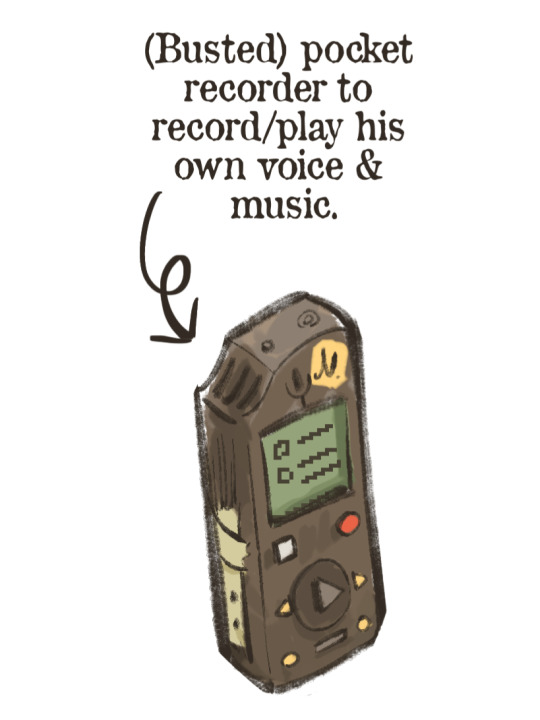
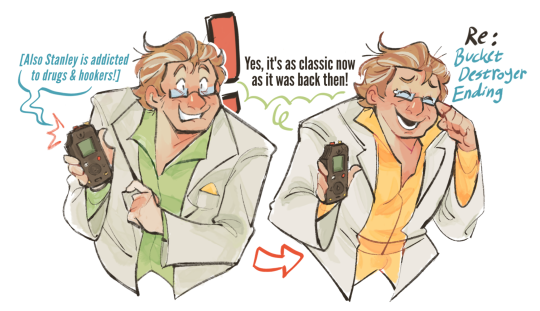




#reposting these from twt sorry#also hi I've been more active in the bird app#my art#the stanley parable#the stanley parable ultra deluxe#tsp#stanley parable#tspud#stanley parable ultra deluxe#the narrator#tsp narrator#tsp stanley#stannarrator#stanarrator#tsp mariella#paratober#ref sheet#visdev#visual development#character design
2K notes
·
View notes
Text

stayed up way past my bedtime last night to make this
#blue eye samurai#imagine my surprise when i realized the basic graphic design skills i learned during my social media internship#and the apps that i downloaded#came in handy for something ACTUALLY important: making better memes
1K notes
·
View notes
Text

RELENTLESS
because i miss him and his constant determination
#technoblade#technoblade fanart#mcyt fanart#mcyt#antarctic empire#if you ask yes ive been olaying sejuani a lot#warrior on massive beast combo will always be peak character design#anyway im not dead on this app i promise#dont ask what the beast is i have no idea
1K notes
·
View notes
Photo

Download for the fun, delete for the feels.
1K notes
·
View notes
Text
wc designs batch 1

#hi guys#sorry for disappearing#i kinda forgot i had this app installed#more gijinkas soon trust#warrior cats#warriors#power of 3#hollyleaf#jayfeather#lionblaze#warriors designs
1K notes
·
View notes
Text

pocketful of stars ✧
✦ find me on instagram @the.flightless.artist ✦
#art#illustration#digital art#drawing#digital illustration#procreate app#digital drawing#digital artist#procreate art#ipad pro#procreate#aesthetic#character design#digitalart#character art#characterdesign#fantasy#ethereal#winter aesthetic#snowy beach#winter beach
9K notes
·
View notes
Text
Saw a video about how Duolingo works and apparently the weird sentences are made by actual people on purpose, because 1- it's fun, 2- something unusual is easier to remember and 3- even if you're not gonna use "the bear talks with a lawyer" in real life you're probably gonna remember the grammar structure when using actual sentences. So whenever you see a Duolingo phrase that maker you go "WTF?!" Know that someone probably had a lot o fun adding it to the app
#i think its really funny actually#and it makes sense in a way#dont get me wrong#i still don't like the new design of the app#but this little detail made me appreciate it more#duolingo#language#langblr#language learning#langblog#studyblr#spanish#spanish langblr
1K notes
·
View notes
Text


2/2 charm designs [ preorder ]
#persona 5 royal#p5#goro akechi#akira kurusu#shuake#hahaha hiii im on a high from finishing grad apps and made more charm designs#my art#dormant shuakism blooms on 2/2 until the next ye
736 notes
·
View notes
Text
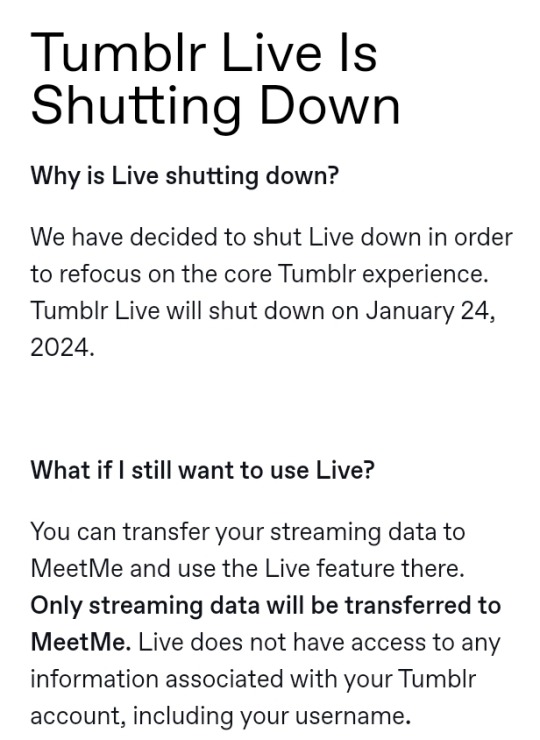

#seal.txt#tumblr live#im hoping they fix the mobile image and video viewers next. especially the video viewer it is like. borderline unusable#obviously i have other suggestions unrelated to design or features but that is the one related to this news.#good riddance! how long has it been part of the app now? it feels like an eternity
747 notes
·
View notes
Text
Boost Your Medical Business in New York with These Simple Tips

Starting your private medical practice is an exciting opportunity to take control of your medical career. Unfortunately, it is challenging and complicated. To keep things moving forward in your medical practice, you’ll need a clear and precise plan from the start. This step-by-step tutorial will assist you in establishing your medical practice.
If you are unfamiliar with “growth hacking,” it’s a new set of strategies that can help businesses develop and gain a competitive advantage. The blog features the most popular techniques for growing your IT healthcare firm and how app designer NYC enables you to stay ahead of the competition.
Before we get into the growth hacks, let’s look at the rules and regulations that go into setting up a medical practice.
1. Many medical clients will choose to establish an LLC company entity. This is an excellent choice for single practitioners or partners looking to open a small medical practice in New York. Physicians can also form a PC or LLP.
2. The name of your new practice must adhere to the naming guidelines set forth by the New York State Education Department. Before beginning any formation project, we do a name clearance search to ensure that the name is accessible for registration and does not contain any restricted terms or phrases. The company name must also appropriately depict the professional’s practice, and some documentation may be necessary if the Members hold any specialty certificates.
3. To open a business bank account when your corporation is established, you’ll need an Employer Identification Number. You can get malpractice insurance, recruit staff, negotiate a business lease, and hang your shingle after the company is legally created.
1. Create a website
Your medical practice requires an internet presence where existing and potential patients can find you. Fortunately, you don’t need to be an HTML expert to get started with a customized website.
Statistics show that 77% of patients utilize search engines before making an appointment.
The quality of your website, on the other hand, is critical to the success of any healthcare product marketing plan. It is a stunning website that identifies who you are, what you can do for your patients, and where they can find new patients through your door faster than anything else.
With smartphones accounting for 52 percent of all web traffic in 2018, this shift should come as no surprise.
Furthermore, every healthcare marketer should ensure that their website and healthcare marketing strategy are built and implemented with a mobile-first mindset. A reliable app designer NYC can help you accomplish this goal.
2. Stay on trend
As we’ve seen, the delivery of care has changed tremendously in the previous five months, with tele consulting becoming the new standard for doctors and patients worldwide.
That is why digital health organizations must keep up with the current developments to grow and provide access to individuals who require it, irrespective of their location. Even in a digital world, having the correct marketing strategy for your company can help keep it on the cutting edge of change.
3. Referral program for patients
A track record of excellent patient care and genuine concern will go a long way toward eliciting positive word-of-mouth and recommendations to friends and family. If you do receive a reference, make sure to thank your referring patients with a handwritten message, a phone call, or a small symbol of appreciation.
4. Post informational content on social media
Globally, there are over 1.94 billion monthly active Facebook users. And, as the site’s tagline implies, it’s all about making connections. A distinct professional Facebook profile for your medical business allows you to communicate with your audience regularly and remind them of your presence.
On average, 2.47 billion people use WhatsApp, Facebook, Instagram, or Messenger every day, and over 3.14 billion individuals use a minimum of one of the Facebook services every month, according to reports. It also allows you to track your marketing activities.
Posting helpful hints, breaking news, and other essential topics will ensure that your followers and fans remember you when they need medical support. It’s also a great place to promote your blog posts—useful and fascinating links shared on Facebook can be shared and passed around, thereby spreading the word about you.
5. Practice management system
The backbone of your practice is your practice management system. A practice management system integrated with your EHR system keeps track of all your front-office data and streamlines operations. Monitoring and conducting your billing and revenue cycle is one of the most important things you can do with it.
Not only will your employees use the practice management system to bill patients and send invoices/claims to payers, but relevant data will be shared between the EHR system and the practice management software, removing the need for duplicate records.
Source: 9series
#app designer#Mobile App Designer NYC#mobile application design#App Designer NYC#businesses app develop#Medical App Design#9series
0 notes
Text
Lol Palworld really thought they could copy Pokémon's homework and get away with it






























#LOL I MAXED OUT TUMBLR'S IMAGE LIMIT#there's so many more too#like I couldn't care less if these were from some bootleg pokemon app or smth but ya'll you're like an actual game#at least one designer on this game was very glad to plagerize and their designs were allowed through??#palworld#pokemon#fakemon#pokemon design#plagerism#video games#nintendo#lucario#luxray#corviknight#cobalion#lilligant#goodra#meganium#decidueye#blaziken#alolan ninetales#silvally#arceus#salazzle#milotic#cinderace
484 notes
·
View notes